Lucknow, Legacy, and Luxury: The Exquisite Craft of the Silver Sandals
- EIH User
- March 26, 2025
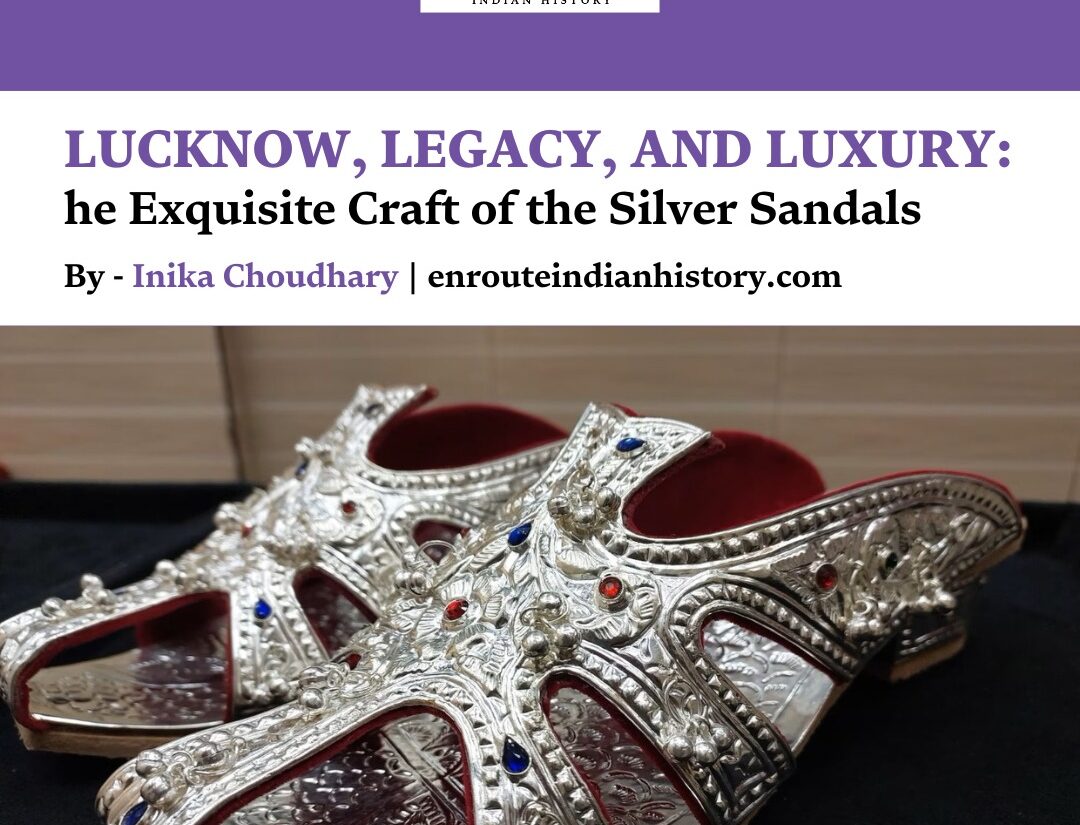
Lucknow, Legacy, and Luxury: The Exquisite Craft of the Silver Sandals
Article By – Inika Choudhary
The Silver Sandals of Lucknow are a timeless blend of exquisite craftsmanship and Nawabi glamour. From being worn by the shehzaadis and begums of the Nawabi times to forming a part of present-day bridal couture, these juttis are the perfect example of the influence of Nawabi culture in everyday Lucknow life and provide a glimpse into an elegant handicraft, one that faces the threat of extinction today. While the famed Zardozi work uses silver and golden threads for decoration, these sandals are carved out of silver and are thus different from mainstream handicrafts.
The Story of Its Spread
Traditional footwear in India, called mojari or jutti, has been in vogue since time immemorial, and regional variations in its style, designs, and the materials and techniques used, have dotted the subcontinent over the years. While Jodhpuri juttis are known for their leather craftsmanship, this article delves into the spectacular silver footwear that has been thriving in the Chowk of Lucknow for more than two centuries now, finding hospice in the ancestral homes of silver nakkashi artisans. While the dying craft is threatened by the inadequate attention paid to it by the younger generation and a lack of demand, recent releases on social media have acted as a boon for its revival, but the baton ultimately lies in the hands of the artisans tasked with the duty of carrying the technique forward.
Most artisans that interviewers talk to reveal how their ancestors migrated from Iran during the Mughal era while performing their hijrah. Settling first in Amroha, Uttar Pradesh, their craftsmanship enamoured the Nawabs of Lucknow, and impressed by their work, they ordered them to make silver jewellery and sandals for their begums. They provided the crafters with the silver required. The resultant sandals complemented their clothes and were studded with gemstones for a royal look. Other designs like ghunghrus of different metals also added to their elegance and grace. Due to the high demand, these artisans permanently shifted to Lucknow, and it is from the Chowk that they now carry forward this age-old legacy.
The sandals have a unique and elaborate process of creation. A frame for the shoes is first created, and after the silver is procured, it is malleated so as to kickstart the nakkashi or engraving and embossing work. The heated sheet is hand-carved with unique designs using specialised equipment, as per the instructions of the buyer. The amount of silver used ranges from 200-400 grams and the final price is approximately Rs. 5,000, increasing or decreasing as per the buyer’s preferences. The sheets are placed on a wooden platform that is spread with hot ‘lac’, and are then beaten by the artisans to get the desired impressions. It is only the block for the sandal that is wooden or rubber, while the inner layering is of velvet to make it feel soft for the wearer. The thin but sturdy silver sheet designed and carved earlier is used to cover the sandal. The sandals are finally studded with gemstones, kundan, and jewels to enhance their appeal, and this entire process can take anywhere from 7 to 15 days. The final work is fitting and shaping, which is mostly outsourced to shoemakers, who give the sandal its final shape and prepare it for selling.
Tales of Artisans
Several artisans still treasure this craft in the Chowk, as well as the Aminabad market of Lucknow. This ancestral work has several accomplished artists, but the craft as stated earlier is slowly dying due to the disinterest of the upcoming generations. Mohammad Ashfaq Khan, or as popularly known, Hafizi Bhai has seen his family be in the business for more than 200 years, and at present, he is conserving the craft with his daughter Aafiya. Originally solicited by the Awadhi Nawabs for their begums, the Nagra-style silver footwear created by him is now purchased by people of all backgrounds. Hafizi Bhai learnt the craft from his father Laadle Khan, and has given it in inheritance to his daughter. The art is now only alive with Khan’s family and a few Muslim patrons who keep ordering for their families. Another carver, Zawwar Hussain also attested to his Iranian heritage and how his ancestors used to provide this craft to the Nawabs.
Dilbar Hussain learned the skill as a child from his father and brother, and as a master artisan today has been honing the skill of making these ‘Chandi ki Chappals’ studded with pearls and jewels for three generations. Azhar Hussain, a seller of silver shoes notes how these are now custom-made for the bride and groom, as opposed to the earlier usage by the Nawabs. The recently famous craftsman, Muhammed Hussain, a 7th generation nakkashi artist whose videos have been making rounds on social media, talks about how this craft has transcended from a mere profession into a way of life for him. Although there is no one to learn the craft after him, the much-needed attention that YouTube has brought to him has increased the demand and appreciation for this craft.
The Silver Sandals at Present
While earlier demands arose from the Nawabi households, where the begums used to wear these as everyday footwear, these sandals are solicited by varied suitors today. They are used in weddings, purchased by the bride’s side and given to her as a dowry. Sometimes, the groom’s family too gifts these to the bride-to-be and she has to wear them during auspicious rituals like the muh dikhai ceremony. Affluent royal families wishing to revive their cultures and strengthen their links with the past are also seen placing orders for the footwear. Further, these sandals are also purchased for the birthdays of young children in the family, not just as presents, but moving a step ahead, as investments for the future generation. Orders are also made by the general public, with a slight tweak in the composition – these low-budget sandals are made primarily with other metals like brass or copper and then coated with silver water to give them their renowned look and finish. While the traditional makers cannot make and sell these due to a lack of resources, several sherwani makers and event organisers place orders, and the wedding season too is replete with 10-15 orders during its time.
Today, the artists echo a lament of decline, for only a handful of them remain to make these shoes. The demanding nature and relatively low income of the craft leads to low interest, and without government intervention, this heritage can also slip into decay. Nawab Masood Abdullah, shared how the persistence of this craft was a result of Nawabi patronage in earlier times, and it is a result of this that the city’s artisans have made a name for themselves worldwide. The Nawab urges the Archaeological Department and the Uttar Pradesh Government to take action with regard to the preservation of this endangered craft. Organised markets like the Meena Bazaar at the Bada Imambara would help showcase traditional craftsmanship and attract more tourists. These can now not only be used as luxury items but also be sold for profits later if needed, thus adding value both financially and aesthetically.
As with any other heritage craft, its beauty and vigour lies in its continued presence amidst present and future generations. These silver sandals are an old tradition, one that strikes the chords of Lucknow’s very roots, but are steady on their path of decline today. Sustained efforts from the government, as well as upcoming artists and the general public are required to help uplift and re-establish it at the level of grandeur it claimed in the Nawabi times.
References:
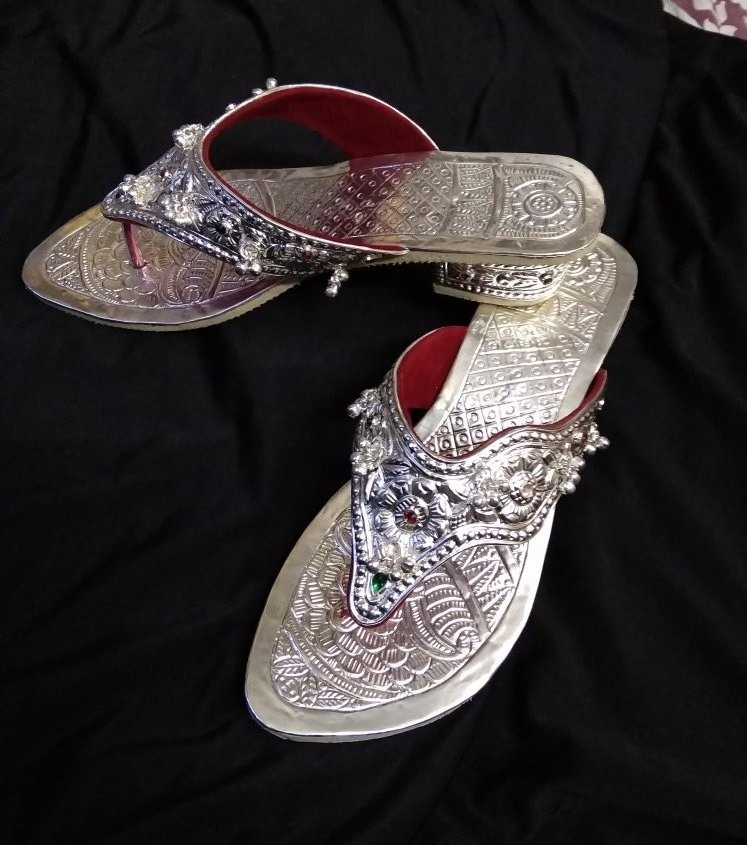 An Image of Silver Sandals, retrieved from a news article by Jagran Publication, dated 9 March, 2020
An Image of Silver Sandals, retrieved from a news article by Jagran Publication, dated 9 March, 2020
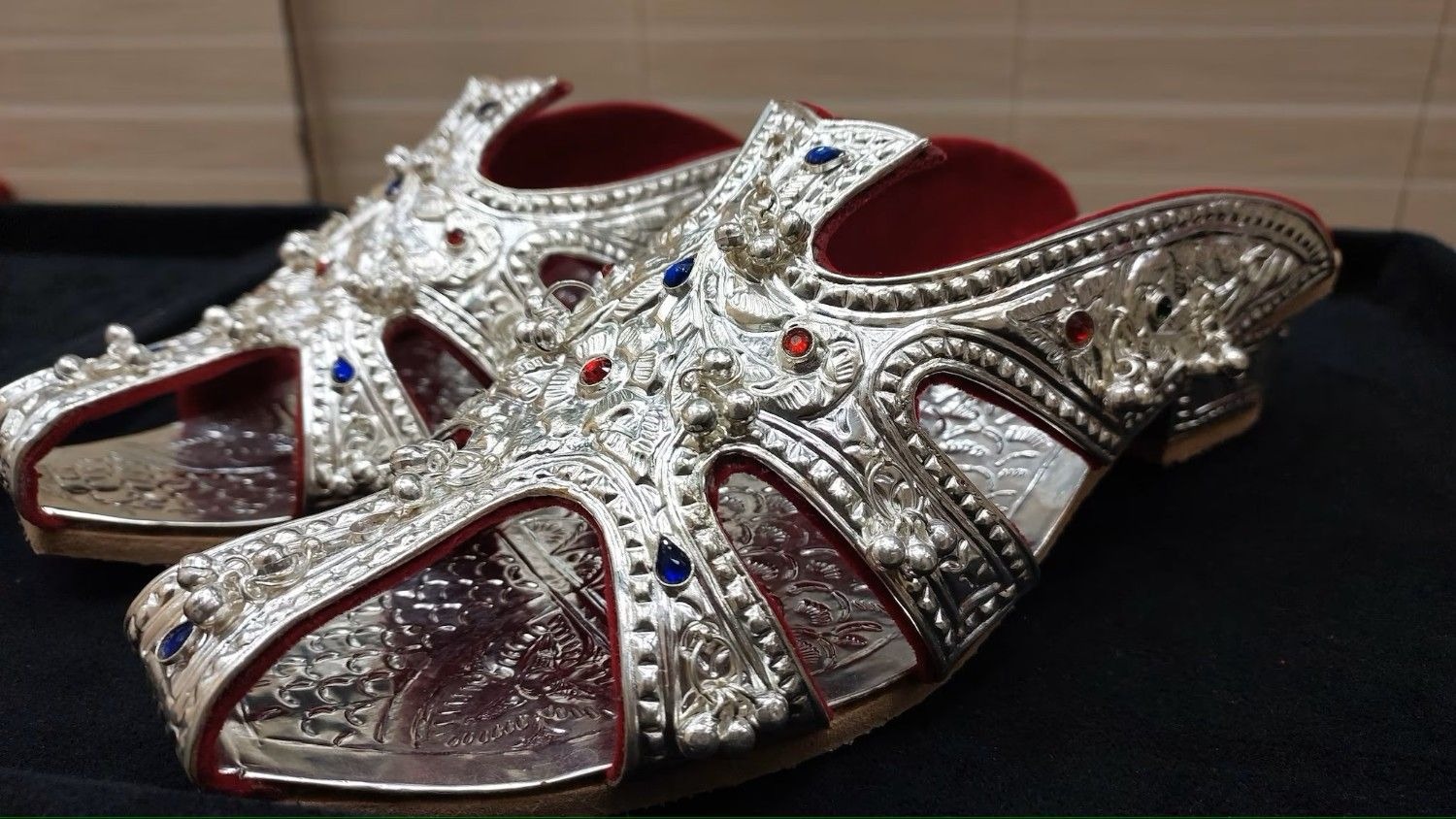 An Image of Silver Sandals preferred as Bridal wear, retrieved from a news article by News18, dated July 18, 2023
An Image of Silver Sandals preferred as Bridal wear, retrieved from a news article by News18, dated July 18, 2023
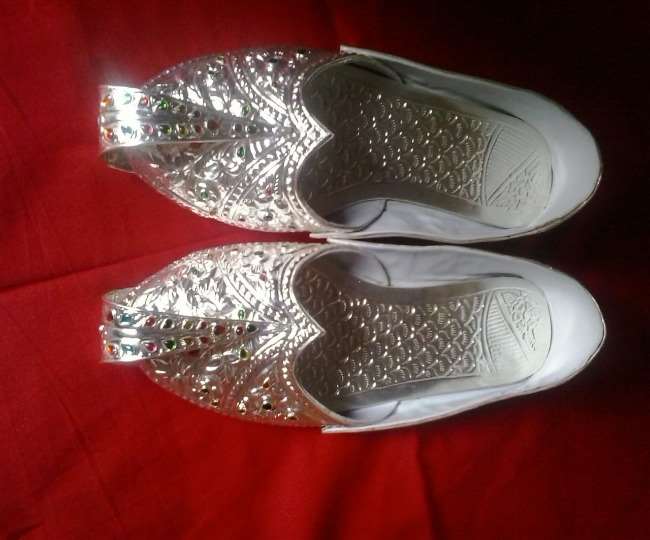 Nagra Style Silver Juttis, retrieved from news article by Jagran Publication, dated 9 March, 2020
Nagra Style Silver Juttis, retrieved from news article by Jagran Publication, dated 9 March, 2020
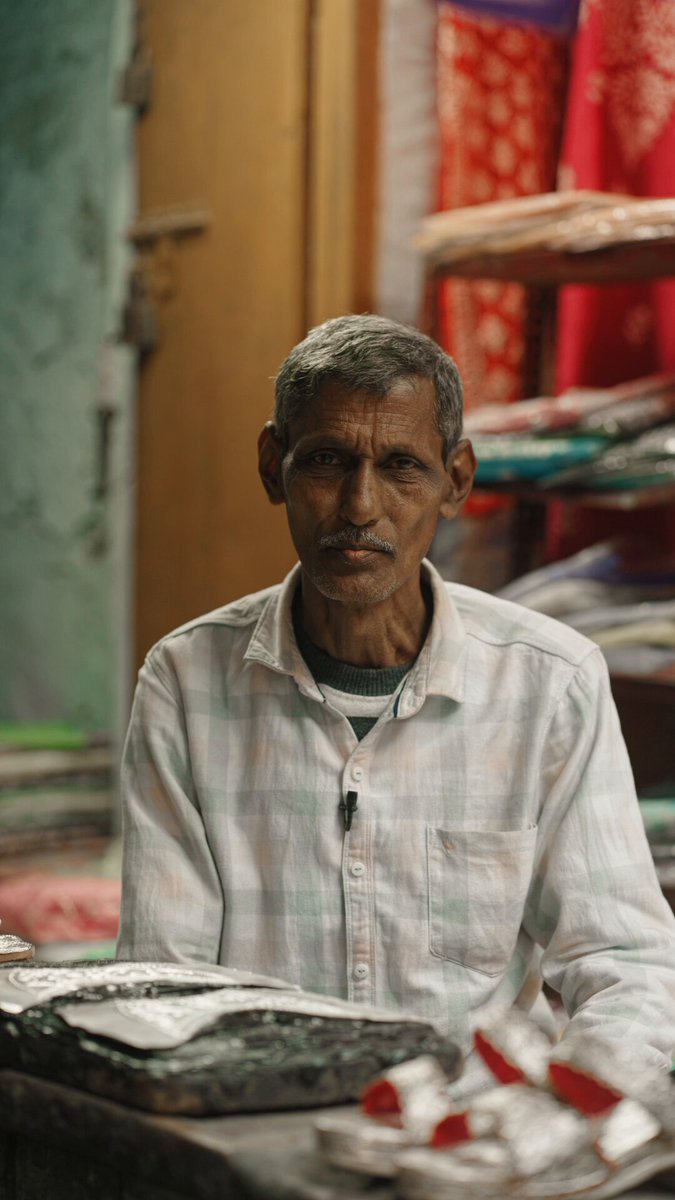 Artisan Mohammed Hussain, one of the last artisans of Lucknow engaged in the crafting of Silver Sandals. Retrieved from a video posted by Maroof (@maroofculmen) on X (formerly Twitter), dated December 5, 2024
Artisan Mohammed Hussain, one of the last artisans of Lucknow engaged in the crafting of Silver Sandals. Retrieved from a video posted by Maroof (@maroofculmen) on X (formerly Twitter), dated December 5, 2024
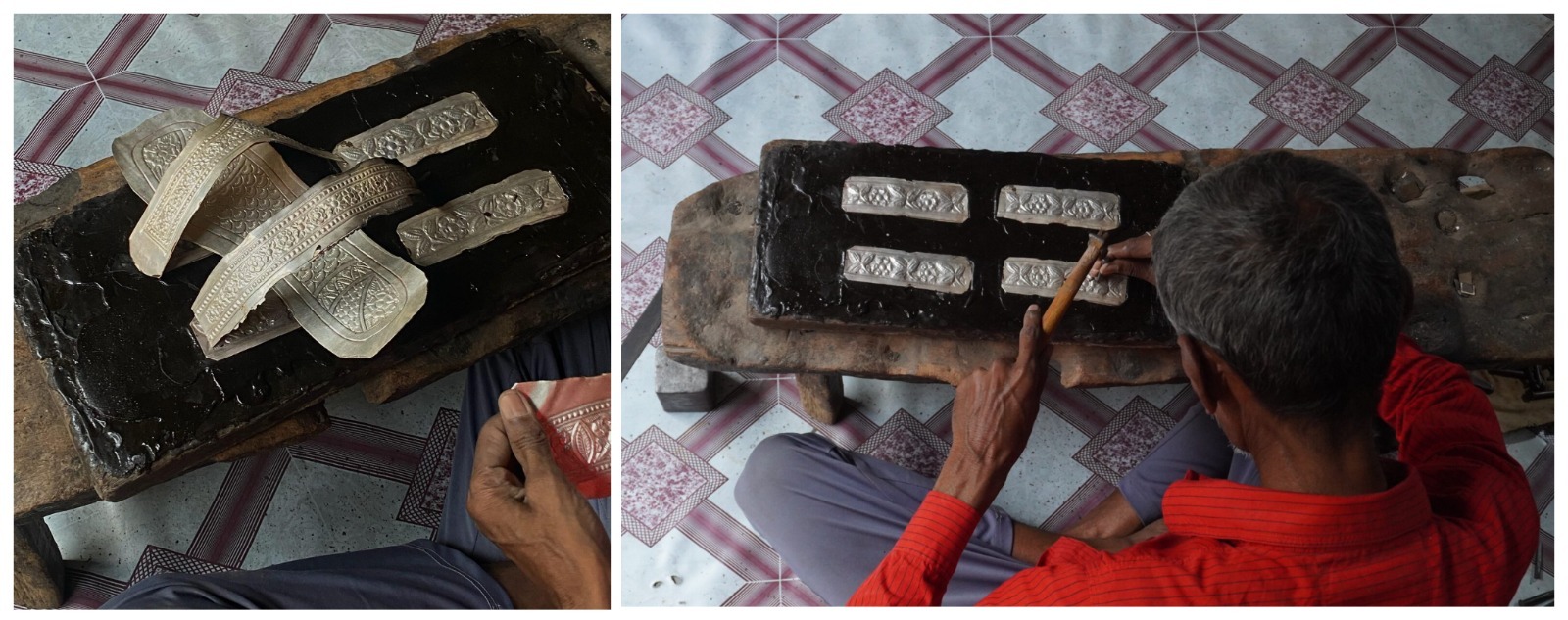 Artisan at work, pressing silver sheets on melted lac. Retrieved from a news article published by Awaz: The Voice, dated 9 December, 2024.
Artisan at work, pressing silver sheets on melted lac. Retrieved from a news article published by Awaz: The Voice, dated 9 December, 2024.


















